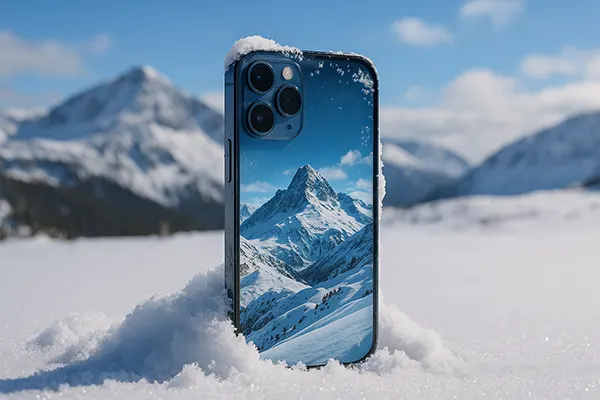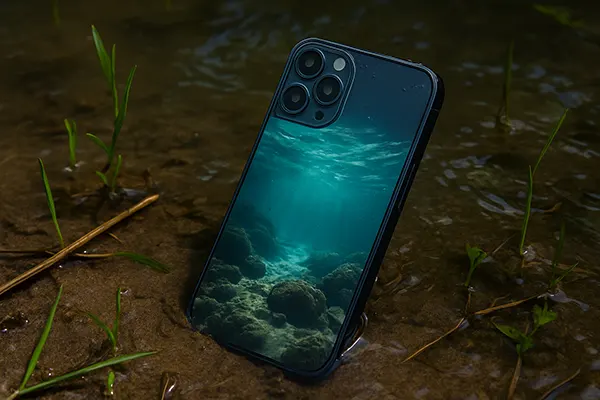Using iPhone in Extreme Conditions: Durability, Power and Imaging Performance

Modern iPhones claim to be water-resistant, dust-tight, and capable of operating in extreme temperatures. But how do these claims hold up under real-world challenges? In June 2025, several independent and field-based tests examined the reliability of Apple’s devices in extreme environments. From mountaineering to desert heat, iPhones are put through their paces.
Durability and Resistance in Harsh Environments
Apple’s most recent iPhones, including the iPhone 15 Pro Max, boast an IP68 rating—suggesting they can survive up to 6 metres underwater for 30 minutes. While this sounds impressive, practical tests in glacial water during alpine expeditions showed partial failure after prolonged submersion. Some models developed moisture behind the camera lens, though general functions remained intact.
Dust resistance is equally important for construction workers and desert explorers. Field reports from Saudi Arabia’s Rub’ al Khali desert showed that despite daily exposure to sandstorms, iPhones sealed in rugged MagSafe-compatible cases remained fully operational. Without such protection, dust penetration led to speaker blockage and overheating alerts.
Impact resistance was another focal point. Drop tests from 1.5 metres onto hard surfaces revealed notable differences between models. The titanium frame of the iPhone 15 Pro withstood shocks better than its aluminium predecessors, but none were immune to cracked displays. Investing in a reinforced case is still recommended for high-risk settings.
Temperature Extremes and Performance Reliability
In the Arctic Circle, temperatures dropped to –25°C, well below Apple’s recommended operating limit of 0°C. During cold exposure, battery performance diminished rapidly, with devices shutting down after 30–45 minutes of active use. Rewarming restored function, but standby time suffered significantly.
On the other end of the scale, desert testing under direct sunlight showed how iPhones cope with extreme heat. In ambient temperatures above 40°C, prolonged 4K video recording triggered thermal shutdown warnings after 10 minutes. Users working outdoors are advised to limit device use or shield them from direct exposure.
Interestingly, GPS accuracy remained unaffected in both cold and hot extremes. Satellite reception maintained strong signal lock, which is crucial for emergency navigation. However, touchscreen responsiveness lagged slightly in the cold, particularly when operated with gloves.
Battery Life During Prolonged Outdoor Use
Battery life is critical in off-grid settings. When used in Low Power Mode with brightness reduced to 30%, the iPhone 15 Pro Max sustained nearly 19 hours of light use, including calls and occasional GPS tracking. However, intensive camera use cut that time by half.
Winter conditions had the most dramatic impact. At temperatures below freezing, lithium-ion batteries suffered efficiency losses of up to 40%. Even with power-saving settings, users in polar regions reported needing to recharge every 8–10 hours of normal usage. Portable power banks are essential companions for remote travel.
Charging speed also dropped significantly in cold weather. Devices refused to charge until warmed above 5°C. This poses challenges for those relying on solar chargers in high-altitude expeditions, where power supply is limited and warming the device can take time.
Power Management Tips for Harsh Conditions
To optimise power usage, disabling background app refresh, location services, and 5G connectivity proved effective. In remote areas, switching to Airplane Mode and manually activating GPS when needed extended battery life by 20–30%.
Keeping the iPhone close to the body under insulated layers helped reduce battery drain. Several users utilised hand warmers near the device to maintain operable temperature. This simple measure made a noticeable difference in freezing environments.
Users are also encouraged to use certified cables and avoid wireless charging in extreme cold. Wired charging was found to be more stable in sub-zero conditions, ensuring a consistent energy transfer when every percent counts.

Camera Performance Under Challenging Conditions
The iPhone’s camera system remains one of its most praised features, but how does it perform in extreme settings? Image sensors performed well in daylight blizzards, capturing crisp snow-covered landscapes without overexposure. Night shots, however, were challenging—thermal noise increased significantly in temperatures below –10°C.
In hot environments, lens fogging became a temporary issue when moving between air-conditioned and outdoor spaces. Users photographing wildlife in African reserves noticed delays in auto-focus when devices overheated. Despite this, video stabilisation features remained smooth and dependable.
Underwater photography in clear lakes produced sharp images up to 4 metres deep. Beyond this, the touchscreen failed to respond, and camera controls had to be triggered via volume buttons. Colour retention and dynamic range remained consistent across most lighting conditions.
Advanced Tips for Mobile Photography in Extremes
To maximise results, photographers used manual controls via third-party apps like Halide. Adjusting ISO and shutter speed manually gave better outcomes in low-light snowfields and high-glare sandy environments. RAW shooting was recommended for post-processing flexibility.
Using physical lens protectors helped avoid micro-scratches from sand and ice particles. These accessories are relatively inexpensive and prevented the deterioration of image quality over time—especially important for travel bloggers and field researchers.
Carrying a microfiber cloth is essential. Rapid lens cleaning during sudden weather shifts (snowfall or dust storms) ensured clarity. In freezing rain, condensation built up quickly, so keeping the device covered between shots proved beneficial.
